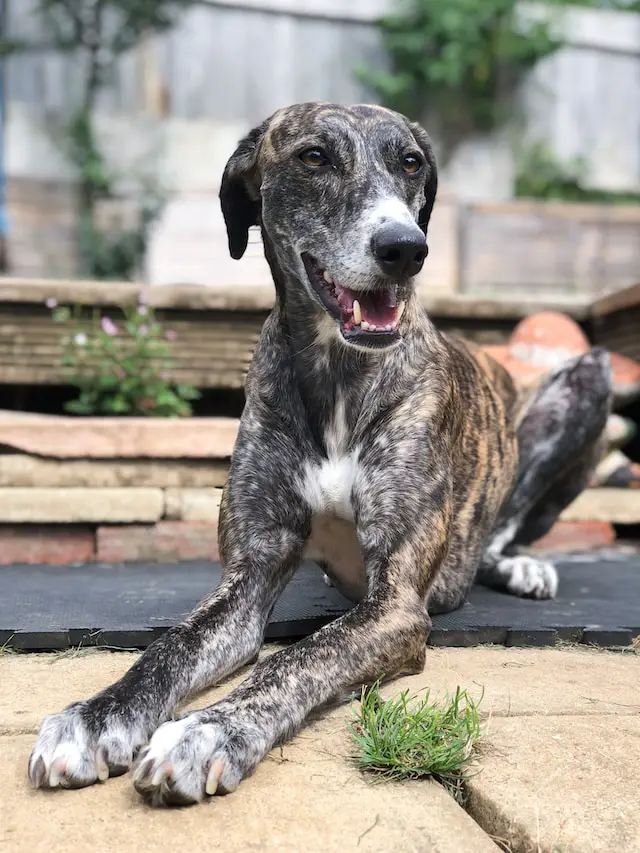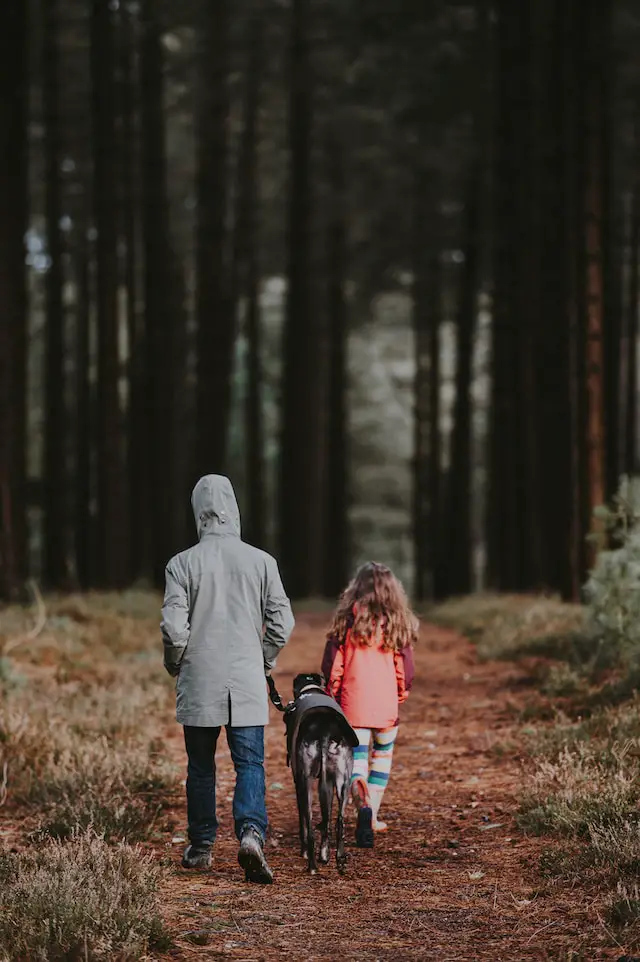Thinking of adding a Greyhound or Lurcher to the family? Here's everything you need to know about these great dogs.
Greyhounds are widely accepted to be the fastest dog breed with a top speed of 45 miles per hour, although they were originally bred for hunting. This skill for hunting is what drives their ability to run at high speeds after prey. But they are also known for their laziness and are very laid-back dogs. They are generally a very well-behaved pet that gets along with other dogs. They can get on well with other pets too provided they don’t have a very high prey drive for the smaller animals such as cats and rabbits. A lead is advised at all times when out walking due to their potential prey drive.
They are very affectionate, mellow dogs who are never happier than in the company of people. They have a calm personality and are very happy to sleep all day. Although very affectionate they are not demanding or slobbery. They rarely lick, but tend to poke their noses at you instead.
Temperaments range from sensitive to very outgoing, but always sensible, happy, sweet and affectionate. They are great with children and enjoy the company of other dogs and would be an asset in any family.
A big benefit of them is that they are clean with very little dog odour. Greyhound’s coats tend to be short and fine with usually only a single layer (which means no undercoat), this means they need little grooming.
Because they have such little body fat, greyhounds can’t tolerate hard surfaces or extremes of hot and cold. They will need a coat in winter due to their low body fat. They will prefer a comfy sleeping area; your couch will do nicely and is strictly a house pet, not an outdoor one. In fact they are notorious for their reluctance to go out in the rain!

Difference Between Greyhounds And Lurchers
What Are Greyhounds And Lurchers Used For In Ireland
Where To Find Greyhound And Lurcher Puppies
Difference Between Greyhounds And Lurchers
A lurcher is a cross breed between any sighthound and a terrier or a collie. There are many different breeds of sighthounds such as the greyhound, Irish wolfhound or the whippet. No two lurchers are the same. They will all have different looks and temperament. A greyhound on the other hand is a purebred dog.
What Are Greyhounds And Lurchers Used For In Ireland
Greyhounds are mostly known for their use in dog racing. The Irish Greyhound Board has licensed a total of 17 tracks in the Republic, of which 9 are owned and controlled by the Board. The remainder are owned and operated by private enterprise. There are also a further two stadia privately owned in Northern Ireland.
There is an issue of welfare of the animals involved in the sport. A 2019 RTÉ Investigates 'Running for their Lives' documentary showed that out of the 16000 track greyhounds born every year and estimated 6000 are killed within one year.
The 2023 iteration of the Horse and Greyhound Fund, first introduced in 2001, will total €91m, split 80% to 20% between the horse and greyhound racing industries respectively. This means state funding for the greyhound industry is €18.2m in 2023. Greyhound Racing Ireland’s annual report shows that pre-tax profits in 2021 were €2.94m. The GRI had pledged to add four care homes for retired greyhounds by March 2022. But as of September 2022 just one of these premises had been set up.
In 2022, Dogs Trust Ireland called for greyhound racing to be ended in Ireland for the first time. And many feel the government should not be funding the sport especially considering greyhound racing receives nearly €20 million per year from the government compared to €3.8m for animal welfare groups.
Greyhounds and lurchers are also used in the hunting of small prey such as rabbits. Ireland is one of just three EU countries to still allow hare coursing. The dogs must wear muzzles to compete to try to prevent injury to the live hares used in the sport. There have been calls to ban the inhumane sport. Alternatives have also been suggested such as drag coursing. This is where the dogs chase a moving rag which is popular in Australia where hare coursing is no longer permitted.

Do Greyhounds Make Good Pets
Greyhounds make great pets but whether they are the right pet for you will depend on your lifestyle and what type of dog will fit into it.
Personality
Greyhounds are a gentle and sensitive breed. If you are in need of a guard dog then look elsewhere. They rarely bark excessively, and given their lazy disposition won’t bother to bark unless for a good reason. They are clever independent dogs, which means they can quickly figure out how to open gates, bins and get into places that they shouldn’t be!
Exercise Required
One of the biggest myths is that they need large amounts of exercise, this is simply untrue. They need no more exercise than any other dog. All dogs regardless of breed, should be walked or exercised and allowed off the lead at least twice a day. Once let off a lead, they tend to tire themselves out very quickly as they love to run and chase. They are built for sprints, not for distance so don’t expect much more than a casual walk.
Diet
Contrary to what you might believe, once greyhounds are retired, they don’t actually need a specific training diet. Ordinary dry complete dog food is more than adequate.
Housing Requirements
Greyhounds are not outside dogs. They have comparatively lower body fat than other breeds, making them highly susceptible to changes in weather.
Accessories
Because sighthounds, including greyhounds, whippets and lurchers, have a long neck that is larger than their head they need to wear a different type of collar to other dogs. There are two types of collar owners use. A sighthound collar or a martingale collar.
A slight hound collar like this one from amazon is wide in the front and tapers down to the ends where it buckles on. These collares were designed to stop the dog from cutting off his arterial blood flow and breath when it is straining on the lead.
A martingale collar like this one from amazon. The “limited slip” collar slips over the head, and tightens when your dog tries to pull or back out of its collar. When it tightens, your greyhound is unable to back out of it making it a superb safety collar.
Where To Find Greyhound And Lurcher Puppies
There are a number of dedicated greyhound rescues in Ireland. You can find some of those listed here.
If you are looking for a lurcher specifically you can also contact your local rescue as most will have lurcher dogs. Finding a greyhound or lurcher puppy in rescue is harder but not impossible. But if you do have your heart set on getting a pup it will take longer. While writing this article I had a quick search for rescues at random and all the rescues I checked had a lurcher but I found no lurcher pups under 6 months advertised. A lot were under 2 years of age so still in the early stages and worth considering if it is a young dog you are after.
Greyhounds and Lurchers make amazing pets and would make a great addition to a suitable home.
